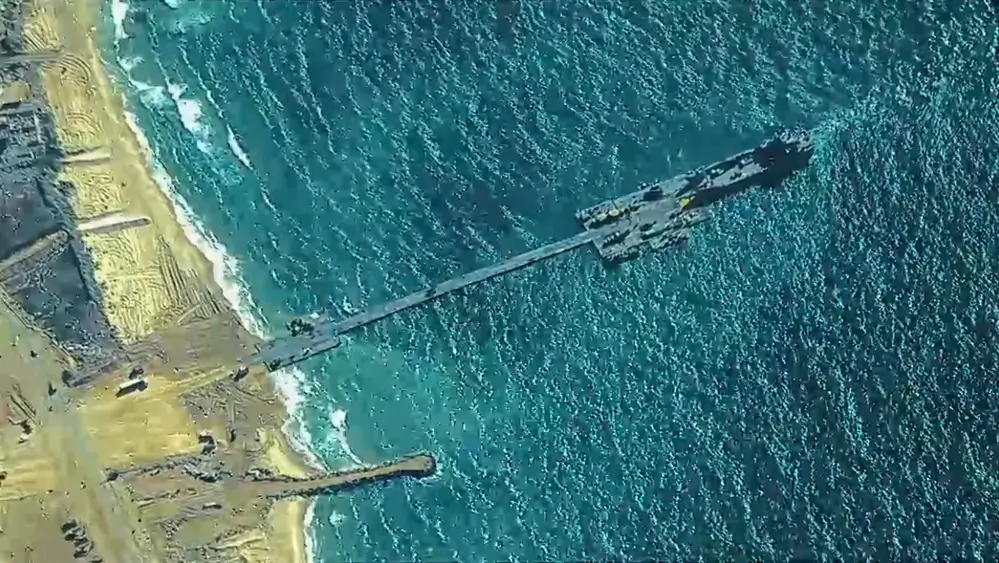U.S. Aid Pier for Gaza Handles its First Cargo

The floating pier that U.S. forces have constructed to deliver food aid to Gaza has handled its first truckload of goods, officials said Friday. From project announcement to first delivery, the preparations took about ten weeks, including a brief weather delay. As the operation ramps up, the maritime corridor could handle up to 150 truckloads of cargo a day, roughly 30 percent of Gaza's pre-conflict aid volume.
U.S. Central Command confirmed the first aid movement in a statement Friday. The first cargo delivery crossed over the pier system and into Gaza at about 0900 hours. No U.S. forces stepped foot on shore, according to the command: non-American contractors are handling the truck driving, and Israeli forces are providing shoreside security.

Courtesy U.S. Central Command
While multiple nations are providing food aid and contributing to the shoreside effort, the floating causeway is a uniquely American military capability. The Joint Logistics Over The Shore (JLOTS) system uses interconnected pontoons to form a long floating finger pier, anchored to shore and extending beyond the surf zone into deeper water (above). A similarly-built but separate receiving platform is anchored a few miles offshore, where there is enough depth to handle sealift ships. The cargo moves from the ship to the receiving platform, from the platform to a U.S. Army landing craft, and from the landing craft to the floating pier, where it is trucked onto shore.

that matters most
Get the latest maritime news delivered to your inbox daily.
This expeditionary logistics system is sophisticated, but the Pentagon acknowledges that it cannot replace the efficiency of trucking aid in from nearby commercial seaports. Israel tightly controls the border crossings into Gaza, and restrictions on entry reduced the delivery of food from 500 truckloads per day before the conflict to as little as 100 per day in early April, according to aid group Oxfam. Trucking volume has since risen to about 360 loads per day, but cross-border food delivery operations still have to contend with serious security problems within Gaza and occasional disruption from Israeli protesters.
Aid officials are also concerned that strict border controls on fuel may degrade the maritime corridor itself. Israeli forces have restricted the cross-border delivery of diesel fuel, making aid distribution within Gaza more difficult - including distribution of the maritime corridor's cargo. Israel says that its security measures are intended to prevent supplies from falling into the hands of the terrorist group Hamas, which killed more than 1,200 Israelis - most of them civilians - on Octover 7.
